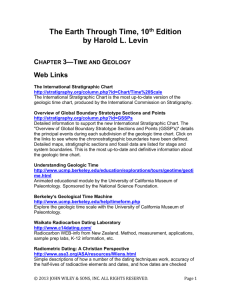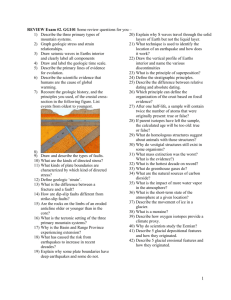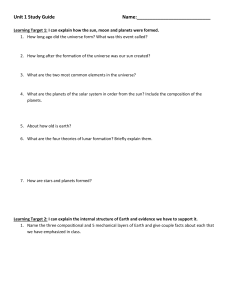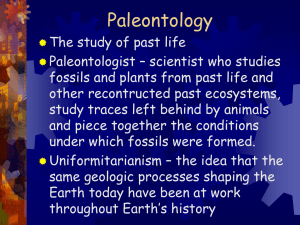click here - TXESS Revolution
advertisement
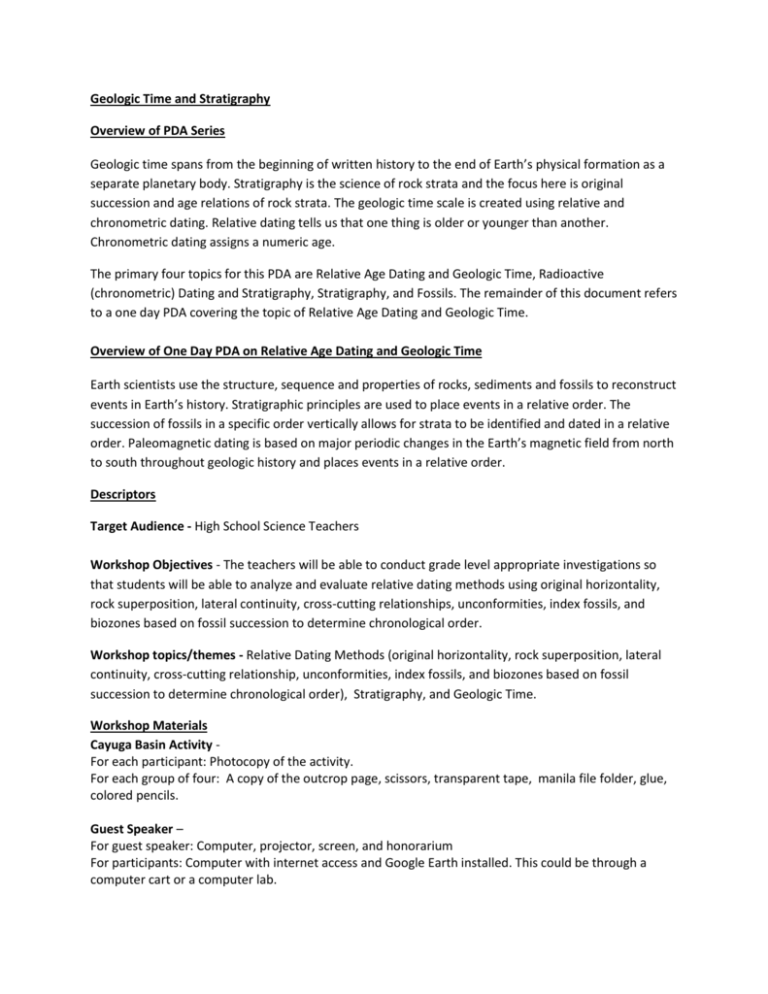
Geologic Time and Stratigraphy Overview of PDA Series Geologic time spans from the beginning of written history to the end of Earth’s physical formation as a separate planetary body. Stratigraphy is the science of rock strata and the focus here is original succession and age relations of rock strata. The geologic time scale is created using relative and chronometric dating. Relative dating tells us that one thing is older or younger than another. Chronometric dating assigns a numeric age. The primary four topics for this PDA are Relative Age Dating and Geologic Time, Radioactive (chronometric) Dating and Stratigraphy, Stratigraphy, and Fossils. The remainder of this document refers to a one day PDA covering the topic of Relative Age Dating and Geologic Time. Overview of One Day PDA on Relative Age Dating and Geologic Time Earth scientists use the structure, sequence and properties of rocks, sediments and fossils to reconstruct events in Earth’s history. Stratigraphic principles are used to place events in a relative order. The succession of fossils in a specific order vertically allows for strata to be identified and dated in a relative order. Paleomagnetic dating is based on major periodic changes in the Earth’s magnetic field from north to south throughout geologic history and places events in a relative order. Descriptors Target Audience - High School Science Teachers Workshop Objectives - The teachers will be able to conduct grade level appropriate investigations so that students will be able to analyze and evaluate relative dating methods using original horizontality, rock superposition, lateral continuity, cross-cutting relationships, unconformities, index fossils, and biozones based on fossil succession to determine chronological order. Workshop topics/themes - Relative Dating Methods (original horizontality, rock superposition, lateral continuity, cross-cutting relationship, unconformities, index fossils, and biozones based on fossil succession to determine chronological order), Stratigraphy, and Geologic Time. Workshop Materials Cayuga Basin Activity For each participant: Photocopy of the activity. For each group of four: A copy of the outcrop page, scissors, transparent tape, manila file folder, glue, colored pencils. Guest Speaker – For guest speaker: Computer, projector, screen, and honorarium For participants: Computer with internet access and Google Earth installed. This could be through a computer cart or a computer lab. Speaker topics could include an overview of stratigraphy, using Google earth to examine stratigraphy, and relevant applications of why we need to know stratigraphy – industrial mining, energy, and climate. Using Fossils to Tell Deep Time For each participant: Photocopies of the activity For each group: One laminated set of cards/group and transparent tape. PBS Video Computer, screen, projector, wi-fi, cables, sound system Science Literacy Article – For each participant: photocopy of article, copy of anticipation literacy guide, jigsaw plan What’s Up: A Relative Age Dating Activity – For each participant: photocopy of the activity, including student pages For group – photocopy of student pages Evaluation Form – For each participant: photocopy of evaluation forms What Teachers Need to Bring Teachers should bring themselves with a good attitude, computer with long Ethernet cable and/or wi-fi capability. What Teachers Can Expect to Gain They will walk out with instructional materials, networking experience, continued support for the classroom, ongoing professional development opportunities, Continuing Professional Education credit, leadership development.


